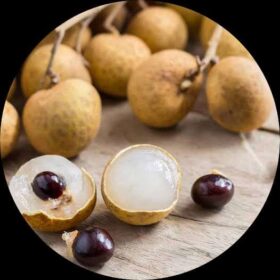- Empty cart.
- Continue Shopping
Kaduk
₹152.00Current price is: ₹152.00. Original price was: ₹275.00.
Genus : Piper
The Kaduk plant, scientifically known as Piper sarmentosum, is a versatile and highly valued herb with a wide range of culinary and medicinal uses. Native to Southeast Asia, this perennial plant features glossy, heart-shaped leaves and a pleasant aroma. In cooking, the Kaduk leaves are often used as a flavorful ingredient in various dishes, adding a unique tangy and slightly peppery taste. Beyond its culinary applications, the Kaduk plant has a long history of traditional medicinal use. It is known for its potential anti-inflammatory, antioxidant, and antimicrobial properties. The leaves are often used to make herbal remedies, teas, or poultices for various ailments. Growing the Kaduk plant in your garden allows you to have a fresh and readily available supply of this versatile herb. It prefers a moist and shaded environment and can be grown in pots or directly in the ground. Whether you’re a culinary enthusiast or an herbal enthusiast, the Kaduk plant is a valuable addition to your garden, offering both flavor and potential health benefits.
Add to cart
Kaduk (Haritaki in Sanskrit) is a small to medium-sized tree that is native to India and other Southeast Asian countries. The plant belongs to the Terminalia genus and is widely used in traditional Ayurvedic medicine for its medicinal properties.
The leaves of the Kaduk plant are simple, oval-shaped and have a leathery texture. The tree produces small, yellowish-white flowers, followed by large, yellowish-brown fruits that contain three seeds. The dried fruit is used for its medicinal properties, which are believed to help with digestive issues, skin problems, and respiratory conditions.
In Ayurveda, Kaduk is considered to have a sweet, bitter and astringent taste, and is believed to be cooling to the body. It is often used to balance all three doshas (Vata, Pitta, and Kapha) and is considered to be a powerful antioxidant.
The Kaduk plant is relatively easy to grow, but it does require a warm and humid climate to thrive. It is generally propagated from seed, and takes about 4-5 years to produce fruit.
In conclusion, Kaduk is a versatile plant with a wide range of uses, both in traditional medicine and in cooking. It is believed to have numerous health benefits, and is widely used in Ayurvedic medicine for its medicinal properties.
Add a review
Currently, we are not accepting new reviews













Reviews
There are no reviews yet